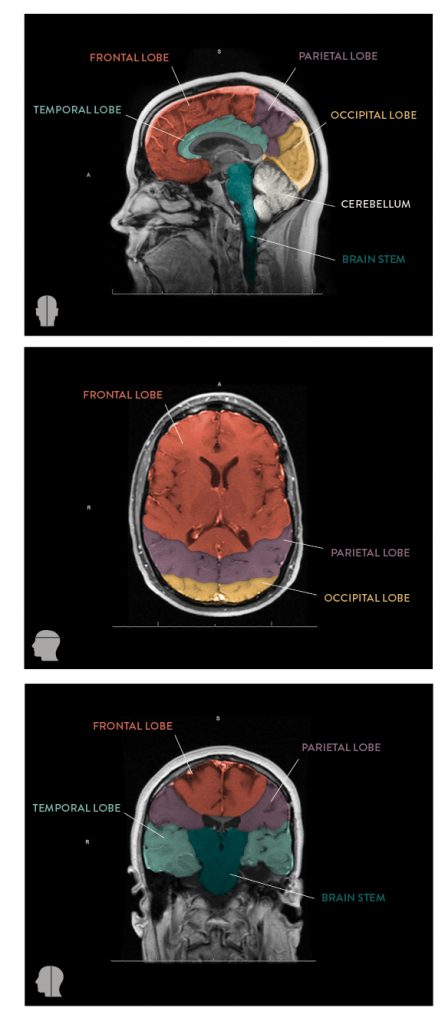It is important to know where the tumor is located within the brain so you can understand what symptoms or changes may occur.

Changes can be due to the impact of the tumor itself or from treatment.
Address any of these concerns with your health care provider to evaluate if there are options to help alleviate their impact on your quality of life.
Brain Anatomy and Functions
Frontal Lobe
Executive functions including concentration, coordination of thought and activity, judgment, emotional expression, inhibition, coordination of muscle strength and movement, strength on opposite side of body, and understanding scent.
Temporal Lobe
Functions including pain, hunger, “fight or flight” response, short-term memory, emotion, understanding words and directions.
Parietal Lobe
Sensation on opposite side of body, expressive and receptive language comprehension, understanding object’s characteristics (for example, texture and temperature and position in space).
Occipital Lobe
Sight on opposite side, image recognition.
Cerebellum
Balance and coordination of movement of body, arms and legs.
Brain Stem
Regulates heart rate, breathing, blood pressure, swallowing and digestion.
You Are Not Alone
Hearing from others who have been affected by a brain tumor can help guide you through your journey.


